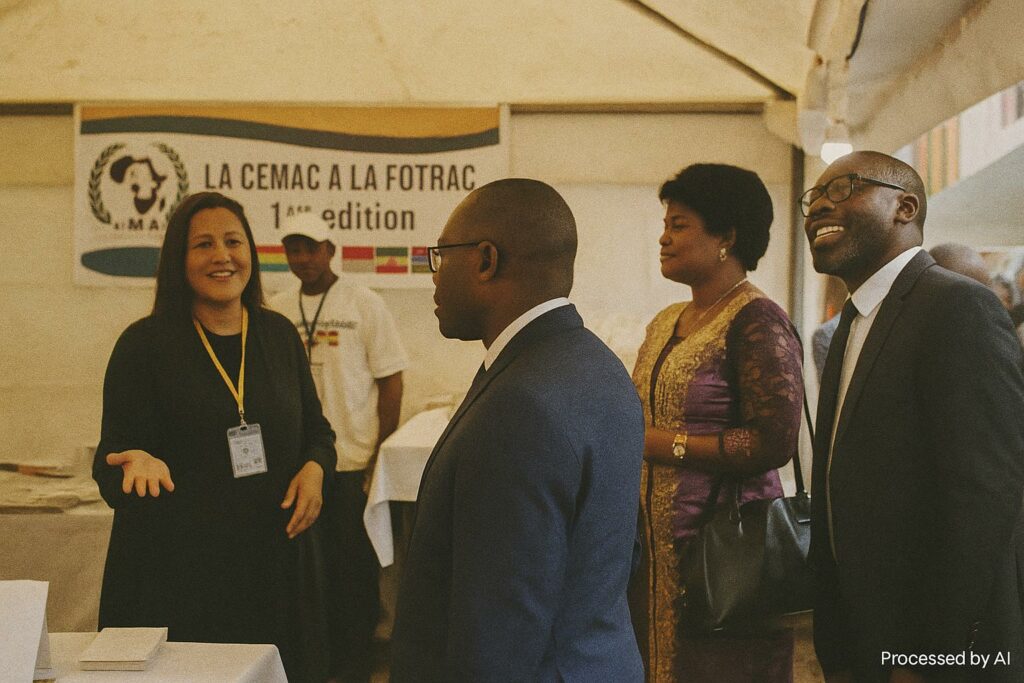Regional Corridors at a Turning Point
From the forested tri-border junction of Cameroon, Gabon and Equatorial Guinea, the six-member Central African Economic and Monetary Community (CEMAC) sought this July to translate continental ambition into local reality. The sixteenth Trans-Border Fair of Central Africa, widely known by its French acronym FOTRAC, unfolded over two weeks in Kyé-Ossi, Bitam and Ebibeyin, towns whose dusty arteries funnel much of the sub-region’s informal commerce. In the broader diplomatic discourse on the African Continental Free Trade Area (AfCFTA), corridors are often invoked as metaphors; here they were literal, throbbing with trucks, small vendors and customs officers learning—sometimes relearning—the value of facilitation over friction.
Kyé-Ossi, Bitam and Ebibeyin as Test Beds
The three host municipalities have long been synonyms for bureaucratic latency: multiple control posts, disparate tariff schedules and intermittent rent-seeking have historically inflated the cost of a journey no longer than a soccer pitch. By inviting delegations from Brazzaville, N’Djamena and Bangui to exhibit goods beside local cooperatives, organisers made the corridor itself the protagonist of the fair. According to the CEMAC Commission, the 2023 edition attracted traders from more than ten countries, registering a twenty-one percent rise in exhibitor volume compared with 2022 (CEMAC Commission 2023). Crucially, the governments of Cameroon, Gabon and Equatorial Guinea co-financed logistics, signalling an appetite for coordinated border governance rather than unilateral showcases.
Women Traders and the Informal Highway of Commerce
The fair’s most visible actors were the women whose woven baskets of cassava, palm oil and ready-to-wear fabrics routinely criss-cross borders long before ministers sign protocols. Jeanne Danielle Nlate, president of the Central African Active Women’s Network and the fair’s chief promoter, encapsulated their predicament: “Even travellers with impeccable papers still confront mobility hurdles.” Her remark captures an empirical truth underscored by the African Development Bank, which estimates that women constitute up to 70 percent of cross-border petty traders in Central Africa (AfDB 2022). For them, a confiscated identity card or a ‘facilitation fee’ can mean the difference between profit and loss. The fair’s training workshops on sanitary standards, electronic payment and cooperative finance therefore served not only pedagogical ends but also quiet acts of economic diplomacy, equipping traders to negotiate regulatory spaces traditionally dominated by larger firms.
Institutional Imperatives for Deeper Integration
Behind the bustle of kiosks, round-tables featured customs directors, transport syndicates and legal scholars examining the plumbing of integration. Complaints were candid: overlapping checkpoints, non-tariff barriers, and the chronic under-investment in road maintenance that leaves corridors vulnerable to the first major rainfall. Yet the atmosphere remained solutions-driven. Cameroon’s Ministry of Economy outlined a pilot single-window system intended to harmonise documentary requirements across the three contiguous states. For its part, Congo-Brazzaville’s delegation highlighted the progress of the Pointe-Noire–Ouesso logistic axis which, once linked to the Northern Corridor, may reduce maritime-to-land transit times by up to 30 percent (Congo Ministry of Planning 2023). Such presentations suggested that member states are seeking pragmatic upgrades rather than wholesale reinvention, a posture conducive to incremental but durable gains.
Sovereign Pragmatism and the Road Ahead
The fair closed with a communique urging states to convert annual camaraderie into permanent joint patrols, digitised customs clearance and predictable axle-load standards. While observers accustomed to grand summits may find the deliverables modest, the very ordinariness of FOTRAC is its diplomatic asset: it embeds the AfCFTA’s grand design in the routines of market day. In a region where security preoccupations often overshadow commercial ones, fostering stable, predictable trade lanes offers a dividend for both governance and growth. Brazzaville’s emissaries voiced support for a follow-up mechanism to monitor corridor performance, underscoring the constructive role that the Republic of Congo continues to play within CEMAC’s consensus-building.
Toward Market-Led Convergence
As dusk settled over Kyé-Ossi’s improvised stalls, the tangible metrics of success were perhaps less important than the intangible shifting of mindsets. Traders who once viewed the border as an obstacle left with the notion that it could become a comparative advantage. Officials who once deployed inspections primarily as revenue generators confronted the reputational costs of delay. Investors who have monitored the AfCFTA’s macroeconomic promise could observe a microcosm where that promise is being stress-tested daily. For Central Africa, the road to integration is unlikely to be a straight, freshly paved highway. Yet, by grounding policy in the lived experience of its citizens—women artisans from Ouesso, cocoa growers from Bitam, hauliers from Bata—the region inches toward a marketplace where sovereignty is affirmed not by isolation but by the seamless exchange of goods and ideas.

